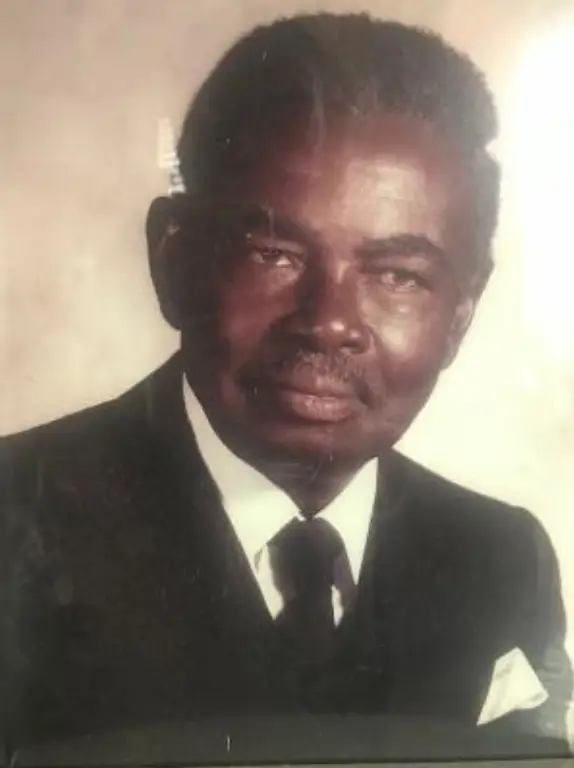On June 12, 1963, Medgar Evers pulled into his driveway at Decatur, Mississippi, after returning from an integration meeting where he had conferred with NAACP lawyers. Emerging from his car and carrying NAACP T-shirts that stated, “Jim Crow Must Go,” Evers was struck in the back with a bullet that ricocheted into his home. He staggered 30 feet before collapsing, dying at the local hospital 50 minutes later. Evers was murdered just hours after President John F. Kennedy’s speech on national television in support of civil rights.
The news hit hard in Madera, especially in the African-American community, and no one was surprised when Rev. Naaman Haynes called for a memorial service and a march for the slain Mississippi NAACP leader. On June 5, 1963, after the service at the Mt. Zion Baptist Church on Wallace Street in Madera, Rev. Haynes organized a march down A Street to Yosemite Avenue, and then down the main street to the courthouse. Knowing that feelings were running high, Rev. Haynes took no chances. He told the marchers “Make no reply to sideliners and do not fight back if anyone attacks you. If you can’t agree to these conditions, do not march.”
And so it went. Naaman Haynes once again put on the mantle of leadership and led the community in a memorial/march at a time when not everyone agreed that it was a good idea. In doing so, he further emerged as a leader of Madera’s African-American Community during the turbulent 1960s.
Naaman Haynes was a powerhouse of a speaker and a natural-born leader, tenacious and fearless in the face of adversity. Perhaps he owed his courage to his early years, after all, life in Mississippi in the 1920s and ‘30s was not an easy lot for an African American. On the other hand, perhaps he got his courage from his faith. By the time he came to Madera in 1959, he was an ordained minister and pastor of the Mt. Zion Baptist Church.
Naaman Haynes descended from slaves. His great-grandfather, Samuel Haynes, was born a slave in 1825. His great-grandmother was also born a slave in 1835. They were both born in Mississippi.
Naaman’s grandparents were both born slaves in Mississippi. Jefferson Haynes was born in 1858, and Sarah Haynes was born in 1860.
Naaman’s father, Junious Haynes, was born in 1891, and his mother, Lula Haynes was born in 1892 — both in Mississippi.
Naaman Haynes was born on Dec. 28, 1915, in Lawrence County, Mississippi. He had a love for learning and managed to go to Utica College (a school for Black students) When his father died suddenly in 1931, Naaman had to leave college to help his family earn a living.
Sometime in the late 1930s, Naaman decided to move to Louisiana to live with relatives there. In 1942, he made another move. This time, he left the South and landed in Fresno where he started a construction business with his brother, Mack Haynes. They built the Mt. Pleasant Baptist Church.
Two very important things happened to Naaman when he lived in Fresno. First, he graduated from the Pacific Coast Bible College, and second, he married Ada M. Langston on September 5, 1953. Six years later the Haynes family moved to Madera with their three children, Naaman, Jr. (7), Geri (5), and Cheryl (3).
Now that he was ordained, the Rev. Naaman Haynes became the pastor of the Mt. Zion Baptist Church. Since he owned a construction company, he decided to tear down the existing structure and build a new church building.
In time, Rev. Haynes touched almost every segment of Madera’s political, economic, social, and academic community. Before his death in 1985, he had served as President of the NAACP; a member of the US Department of Justice, Juvenile Justice and Delinquency Prevention Commission, Madera County; a member of the Progressive Men’s Club in Madera; marched in Selma, Alabama, with Dr. King in 1965; led the fight against racism in the Madera County Hospital; served as vice president of the Madera Ministerial Association; served as president of the Sierra Vista School PTA; served as a member of the board of the American Red Cross; served as education chairman of the American Cancer Society; served as vice chairman of the Madera City Human Relations Commission.
For these reasons, the Madera Method Historians at La Vina and Eastin Arcola Schools have chosen Rev. Haynes as one of Madera’s African-American leaders who helped guide the community through the murky waters of Jim Crow and the Civil Rights struggle.
There is much more of Rev. Naaman Haynes’ story to tell. Some of it will be told here in this column. The rest will be told in the book the students are writing. Please stay tuned.
Originally published in the Madera Tribune
The Madera Method book Madera’s Journey from Jim Crow to Civil Rights: The Journalistic Record is now available for download.




